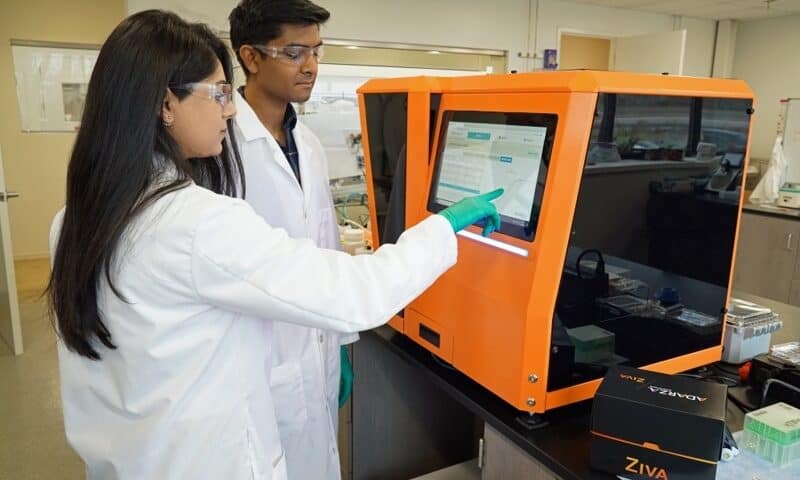You might be staring at one all day: a dirty computer screen, with its fine layer of dust and smudges, could be more than an eyesore or a reminder of how long you’ve been working—it can actually illustrate the science at play behind a test for examining the body’s wider immune response to the novel coronavirus.
“I’m incredibly obsessive about keeping my computer screen clean,” said Ben Miller, a biomedical engineering professor at the University of Rochester. “And inevitably, someone will immediately come into my office and point something out on the screen and touch it.”
That irksome fingerprint is, essentially, a biological detection experiment, Miller said in an interview with FierceMedTech. “You’re seeing some material left behind on a reflective surface that you can detect by a change in reflectivity.”
That forms the basis for arrayed imaging reflectometry, or the AIR technology being commercialized for biomedical research work by Adarza Biosystems.
It starts with a strong anti-reflective coating, spread across the surface of an otherwise standard-shaped well plate, that works to capture and deflect as much light as possible. Then, capture probes are arrayed on top, designed to bind with a range of different target molecules.

After adding a sample, a laser is used to scan each well. As more target molecules bind to the surface, more light is reflected and captured by the system, delivering a clear signal of whatever is present in one step—such as antibodies for the novel coronavirus or other diseases, or the cytokine regulators of the body’s immune system.
Adarza had been developing the technology for research use in immuno-oncology or cell therapy applications—though it has also been used to study influenza—with plans to begin a commercial rollout this year, according to President and CEO Bryan Witherbee.
However, with the spread of COVID-19 this year, the company pivoted further into respiratory diseases and vaccine development, and aims to provide a more detailed view than other antibody tests on the market.
“Certainly, early on, it was kind of a Wild West situation where everyone was developing antibody tests,” said Miller. “But with very few exceptions, they were all focused on single antigens—so using a single part of a protein from SARS-CoV-2 to detect antibodies. And while that can be pretty useful, it’s limited in terms of what information it gives you.”
“So the advantage that we can bring to the table with our technology was the ability to look at many different antigens at once—so not just one protein from SARS-CoV-2, but lots of them, as well as looking at protein antigens from other upper respiratory infections,” he said.
This could allow researchers to explore whether a person’s pre-existing immunities to other respiratory pathogens can influence their response to COVID-19.
The company is in the midst of beta testing, but plans to release the first acute respiratory panel for its Ziva system this August, Witherbee said. This would include multiple targets for the novel coronavirus, including antigens aimed at its spike protein and variants of its binding domains, as well as the more common human coronaviruses plus respiratory syncytial virus and influenza A and B.
“The path to get to this has been around for over a century,” said Miller. “We use equations for modeling thin films on a chip that have been around for a very long time. The thing is, nobody a century ago thought this would be an actually useful thing to do.”

